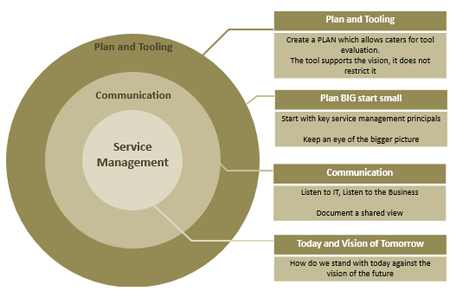This brought a level of realisation to me in the work place and through meeting up with a few colleagues. Within the service management arena too much is expected in terms of any of the great tools now available - Remedy, Service Now or Magic - the list is ever growing.
In the same way that a great drill and saw is never going to build my daughters vison of a tree-house, the service management tool is never in its own right, without design, going to deliver Incident, change, request, problem, SLA and service catalogues to an organisation.
The exercise needs to be driven by a clearly defined business need, followed by the right amount of stakeholder management, followed by a plan, which leads to the correct level of tool evaluation.
How many times have we seen tools driven with an IT focus, excluding business need, which fail to achieve what they set out to do, which ultimately is to assist delivery of the IT service, in a way which is understood by the business.
How many times have we seen both IT departments and the business blame a very good tool for shortcomings in the service.
The process needs to be:
- Identify the need; what needs to be improved and what can be achieved for any delivery of service by making these improvement.
- Quantify the need; where do we stand today and what is needed to meet the vision of tomorrow. Building on poor foundations is not going to be an enabler for the future, it may be more opportune to realign the errors before moving forward.
- Stakeholder management; ensure that the need and vision is in line with that held by key IT and business stakeholders, ensuring an open door policy at the start of any CSI, so that the views of both are openly encouraged, documented and reviewed. Too many times have we seen changes made with a basis towards either business or IT, when it is only by bringing them into one dimension will fully see a more rounded service offering.
- Think BIG, plan small; although the plan may state that it will deliver all the key service management principles, focus must be on getting the more familiar ones correct, this normally being incident and change, whilst maintaining a high level of vision so that when this are imbedded they do no prohibit expansion to the next service management principle.
The organisation I work for comes across this time and time again and sometimes it is very difficult to say stop and review because of the investment already made, time, resource or both, however doing this may allow time to put in plans in place which are needed and supported.

I do think what I am raising is new, but sometime the same words on a different day, coinciding with new budgets, New Year’s allows organisations to stop and review.
David Paul Lightfoot MBCS












